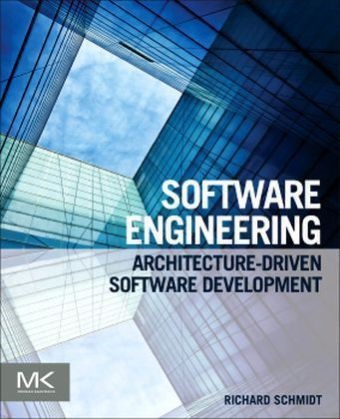Read more
Informationen zum Autor Richard F. Schmidt has over 30 years of experience in systems and S/W engineering in the aerospace community. While serving the Air Force Systems Command, he chaired a Joint Service Working Group which produced Revision A of DoD-STD- 2167, Defense Systems S/W Development, and DOD-STD-2168, Defense Systems S/W Quality Program. Richard continued his involvement in standards by chairing the IEEE Working Group on Systems Engineering Management, responsible for the publication of IEEE 1220, The Application and Management of the Systems Engineering Process. Supported the Navy’s RDA Chief Systems Engineer (CHENG) Office for 9 years as an independent consultant for Systems and Software Engineering policy and practices, producing the Naval System-of-Systems (SoS) Systems Engineering Guidebook in 2005. Richard is currently the Director of Marketing for Vitech Corporation, the providers of CORE. Richard has also worked for CASE Tool vendors including Rational S/W, and Ascent Logic Corporation. Klappentext According to reports based on IT case studies, more than half of all software projects either fail outright or run woefully over budget and behind schedule. Software engineering education is not "standardized." Many institutions focus on implementation rather than design as it impacts product architecture. Many graduates join the workforce with incomplete skills and may not be prepared to perform the duties required during their initial careers. In 2004, the IEEE proposed the Software Engineering Body of Knowledge (SWEBOK) standard, which offers a reference for key skills, but not the training path to ensure mastery. Software Engineering: Architecture-driven Software Development is the first comprehensive guide to the underlying skills embodied in the SWEBOK, covering the majority of the standard. Standards expert Richard Schmidt explains the traditional software engineering practices recognized for developing projects for government or corporate systems.Additionally, many software engineers lack an understanding of system engineering and architecture--the hardware and peripherals their programs will run on--leading to inefficient coding or changes in project requirements. This issue will only grow in importance as more programs leverage parallel computing, requiring an understanding of the parallel capabilities of processors and hardware. Therefore, this book will give both software developers and system engineers key insights into how their two skillsets can support and complement each other. The book maintains focus on these key knowledge areas and offers a set of "best practices" that can be applied to any industry or domain involved in developing software products. Inhaltsverzeichnis Section 1 - Software Engineering FoundationsSection 2 - Specifying Software RequirementsSection 3 - Developing the Functional ArchitectureSection 4 - Developing the Physical ArchitectureSection 5 - Software Architectural Design DecisionsSection 6 - Managing the Software ArchitectureSection 7 - Software Integrated Product and Process Development ...
List of contents
Section 1 - Software Engineering Foundations Section 2 - Specifying Software Requirements Section 3 - Developing the Functional Architecture Section 4 - Developing the Physical Architecture Section 5 - Software Architectural Design Decisions Section 6 - Managing the Software Architecture Section 7 - Software Integrated Product and Process Development
Report
"This work is unusual in that the author begins by challenging the notion that the field of software engineering is currently well defined and understood. He identifies two common problems, failure to understand how to develop complete software designs before coding begins and lack of consistent, scientifically verified software engineering techniques." --Reference & Research Book News, October 2013
".there may be some large-scale project managers in and out of government who will embrace this text as a holy grail.Chapter 15 on verification and validation and chapter 16 on control (configuration management) are particularly helpful and worthy of careful study." --ComputingReviews.com, August 29, 2013

